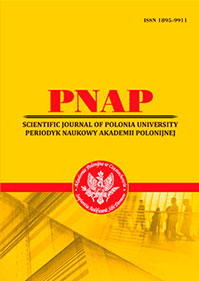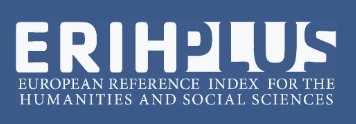МЕТАФОРИЧНА РЕПРЕЗЕНТАЦІЯ КАТАСТРОФИ В АНГЛІЙСЬКОМОВНОМУ МЕДІА ДИСКУРСІ
Анотація
У статті досліджується використання метафор катастрофи в англомовному медіа дискурсі, розглядаються особливості їхнього утворення та роль у формуванні громадської думки щодо катастрофічних подій. Спираючись на теорію концептуальних метафор та дискурс-аналіз, наукова розвідка виявляє, яким чином метафори структурують розуміння та впливають на публічне сприйняття суспільно значущих подій. У статті зазначено, що метафори в медійному дискурсі через фреймінг подій впливають на емоційні реакції аудиторії та стимулюють публічні дискусії. Розмаїття метафор катастрофи у медіа дискурсі відображає зміни у ставленні до суспільних проблем, виклики технічного прогресу та загрози, що несуть людству глобальні кризи. У роботі досліджується, як метафора формує дискурс навколо катастроф та як медіа фреймінг впливає на аудиторію. Аналізуючи публікації новинних повідомлень, аналітичних статей, телевізійних репортажів відомих англійськомовних ЗМІ (включаючи The Guardian, CNN, BBC, The New York Times, Fox News, CNBC, The Washington Post, The Wall Street Journal) з 2017 року дотепер, це дослідження визначає поширені схеми метафоричного фреймінгу (які включають метафори ВІЙНИ, ПРИРОДНОЇ СТИХІЇ, ХВОРОБИ та ГРИ) для представлення катастроф під час висвітлення подій у ЗМІ. За допомогою аналізу метафоричної мови у медійних повідомленнях про стихійні лиха, пандемії та соціально-політичні кризи, дослідження підкреслює риторичну силу метафор, пов’язаних з катастрофами, та їхній вплив на формування реакції суспільства. Емоційний вплив таких метафор на цільову аудиторію є різноманітним та доволі інтенсивним: метафори війни можуть посилювати страх і тривогу, метафори стихійного лиха викликають відчуття безпорадності, метафори-персоніфікації можуть впливати на етичне сприйняття катастроф. Критичний аналіз та розуміння особливостей метафоричної мови є важливим як для авторів сучасних мас медіа, так і для користувачів.
Посилання
2. Charteris-Black J. Analysing Political Speeches: Rhetoric, Discourse and Metaphor. Bloomsbury Publishing, 2018. 298 р.
3. Charteris-Black J. Corpus Approaches to Critical Metaphor Analysis. London : Palgrave Macmillan. 2004. 278 p. URL: https://doi.org/ 10.1057/9780230000612 4. Charteris-Black J. Metaphors of coronavirus: Invisible enemy or zombie apocalypse? Palgrave Macmillan, 2021. 317 p.
5. Charteris-Black J. Fire Metaphors: Discourses of Awe and Authority. London: Bloomsbury Academic. 2019. URL: https://doi.org/10.5040/ 9781474219556
6. Chowdhury T., Rannikmäe M., Holbrook J., Zaluzhna M., Cavas B. Navigating Wicked Problems through Science Education and Culture: Insights from Bangladesh, Estonia, Turkey, Ukraine. Science Education International. 2024. Т. 35. № 4. C. 293–310.
7. “Disaster”. The Sendai Framework Terminology on Disaster Risk Reduction. United Nations Office for Disaster Risk Reduction (UNDRR). 2017. URL: https://www.undrr.org/terminology/ disaster (accessed 18.07.2025).
8. Entman R. M. Framing: Toward a Clarification of a Fractured Paradigm. Journal of Communication, Vol. 43, Issue 4, December 1993. P. 51–58. URL: https://doi.org/10.1111/j.1460-2466.1993. tb01304.x
9. Fairclough N. Critical Discourse Analysis: The Critical Study of Language. London & NewYork : Longman, 1995. 265 p.
10. Haddow G. D., Haddow K. S. Disaster Communications in a Changing Media World. 3rd ed. Oxford : Butterworth-Heinemann, 2023. 198 p.
11. Lakoff G., Johnson M. Metaphors We Live By. Chicago & London : University of Chicago Press. 1980. 242 p.
12. Mio J. S. Metaphor and Politics. Metaphor and Symbol. 1997. Vol.12 (2). P. 113–133. DOI: 10.1207/s15327868ms1202_2
13. Mottier V. Metaphors, mini-narratives, and Foucauldian discourse theory. Political language and metaphor. London: Routledge, 2008. P. 182–194. URL: https://doi.org/ 10.4324/9780203931233-23
14. Musolff A. Metaphorical Framing in Political Discourse. Handbook of Political Discourse, ed. P. Cap. Cheltenham : Edward Elgar, 2023. P. 145–163. URL: https://doi.org/10.4337/97818 00373570.00019
15. O’Keeffe A. Media and discourse analysis. The Routledge Handbook of Discourse Analysis. London, New York : Routledge, 2012. P. 441–454. URL: https://dspace.mic.ul.ie/bitstream/handle/ 10395/1681/O%20?sequence=2 (accessed 10.07.2025)
16. Semino E. “Not Soldiers but Fire-fighters” – Metaphors and Covid -19. Health Communication. 2021. Vol. 36. №1. P. 50–58. URL: 10.1080/10410236.2020.1844989
17. Sontag S. Illness as Metaphor. New York : Farrar, Straus and Giroux. 1978. 87 p. URL: https://monoskop.org/images/4/4a/Susan_Sontag_ Illness_As_Metaphor_1978.pdf
18. Steen G. J., Dorst A. G., Herrmann J. B., Kaal A., Krennmayr T., Pasma. T. A Method for Linguistic Metaphor Identification: From MIP to MIPVU. Converging evidence in language and communication research. Vol. 14. Amsterdam & Philadelphia : John Benjamins Publishing Company, 2010. 238 p.
SOURCES OF ILLUSTRATIVE MATERIAL
19. BBC (2017-2025). URL: https://www.bbc.com/
20. CNBC (2017-2025). URL: https://www.cnbc.com/
21. CNN (2017-2025). URL: https://edition.cnn.com/
22. Fox News (2017-2025). URL: https://www.foxnews.com/
23. The Guardian (2017-2025). URL: https://www. theguardian.com/
24. The New York Times (2017-2025). URL: https://www.nytimes.com/
25. The Wall Street Journal (2017-2025). URL: https://www.wsj.com/
26. The Washington Post (2017-2025). URL: https://www.washingtonpost.com/
 ISSN
ISSN 


.png)




